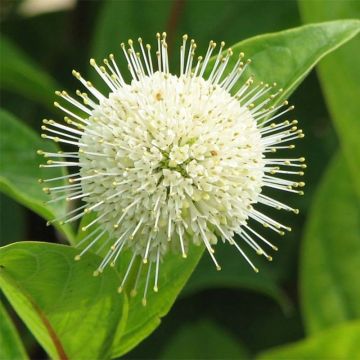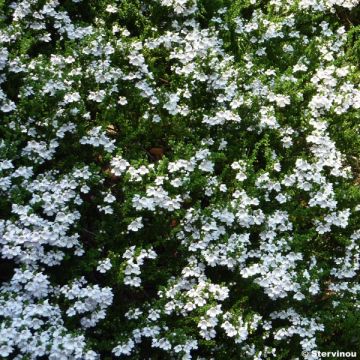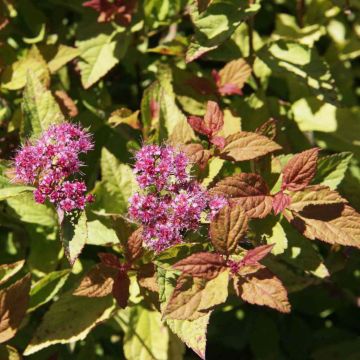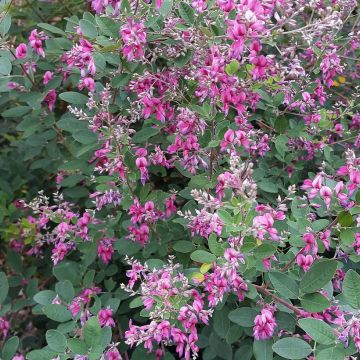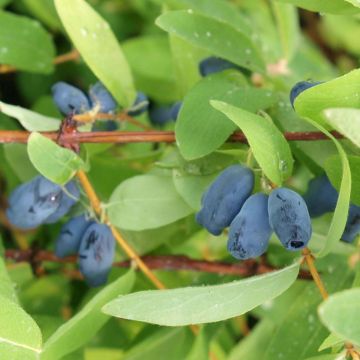Shipping country and language
Your country of residence may be:
Your country of residence is:
For a better user experience on our website, you can select:
Your shipping country:
Andorra
Austria
Belgium
Bulgaria
Canada
Chile
Croatia
Cyprus
Czechia
Denmark
Estonia
Finland
France
Germany
Greece
Hungary
Iceland
Ireland
Italy
Latvia
Lithuania
Luxembourg
Malta
Monaco
Netherlands
Poland
Portugal
Romania
Slovakia
Slovenia
Spain
Sweden
Switzerland
United Kingdom
We only deliver seed and bulb products to your country. If you add other products to your basket, they cannot be shipped.
Language:
French
German
Spanish
English
My Account
Hello
My wish lists
Plantfit
Log in / Register
Existing customer?
New customer?
Create an account to track your orders, access our customer service and, if you wish, make the most of our upcoming offers.


Cephalanthus occidentalis Sugar Shack


Cephalanthus occidentalis Sugar Shack
Cephalanthus occidentalis Sugar Shack
Cephalanthus occidentalis Sugar Shack
Button Bush, Button Willow, Globe-flowered bush, Honeybells, Little Snowballs, Swamp Globeflower, White Pond - Dogwood
Plant received in good condition. It remained in a state of vegetative growth for an entire year, appearing dead, and finally, a little over a year later, it sprouted its leaves. It seems well established now. I am still waiting for the flowers that I have never seen before.
Marie, 06/05/2023
Why not try an alternative variety in stock?
View all →Order in the next for dispatch today!
Dispatch by letter from €3.90.
Delivery charge from €5.90 Oversize package delivery charge from €6.90.
More information
This item is not available in your country.
Schedule delivery date,
and select date in basket
This plant carries a 24 months recovery warranty
More information
We guarantee the quality of our plants for a full growing cycle, and will replace at our expense any plant that fails to recover under normal climatic and planting conditions.
From €5.90 for pickup delivery and €6.90 for home delivery
Express home delivery from €8.90.
From €5.90 for pickup delivery and €6.90 for home delivery
Express home delivery from €8.90.

Does this plant fit my garden?
Set up your Plantfit profile →
Description
Cephalanthus occidentalis Sugar Shack is a new variety of a little-known deciduous North American shrub commonly known as Buttonbush or Buttonwillow. It stands out for its reduced growth, better suited to small gardens. Very bushy, branching from the base, it offers in late summer or early autumn a very original flowering, in the form of clusters of small creamy white and pleasantly fragrant heads. This is followed by a bright and bristly fruiting that is very decorative on a very beautiful foliage of bright and shiny green. This delightful plant, which shines from spring to autumn, requires constantly moist to wet soil. Plant it near water points, in a clump or in a small hedge.
Cephalanthus occidentalis belongs to the Rubiaceae family, along with Gardenia, coffee or cinchona. This hardy deciduous shrub is native to North America, specifically the wet to marshy areas of eastern Canada and the United States. Its range extends to Mexico and Cuba where it often forms very dense colonies. Its grey-brown bark cracks with age, peeling off in thick plates. Tolerating shade well, the Buttonbush is nevertheless much more floriferous in non-burning sun.
The 'Sugar Shack' cultivar, recently obtained in Canada, distinguishes itself mainly by a much more compact habit and increased flowering. It quickly forms a quite dense bush, producing many highly branched stems from its base. At maturity, the shrub will reach about 1.1 m (3 ft 7 in) in all directions. The grey-brown branches bear deciduous leaves that bud late in spring. They are tough, 10 cm (3.9 in) long, ovate, lanceolate, bright to olive-green and shiny on the upper side, lighter underneath, with lighter veins giving the lamina a wavy appearance. The autumn foliage shows a beautiful golden-yellow colour, sometimes tinged with copper-red before falling. From July to October depending on the climate, for about eight weeks, the unusual flowering of this plant appears. At the end of the year's branches appears a long branched petiole, each branching bearing a very dense globular inflorescence measuring about 3 cm (1.2 in) in diameter. Each capitulum or 'pompon' is composed of tiny tubular flowers with prominent yellow stamens mimicking pinheads. These fragrant, nectar-bearing and honey-bearing flowers attract many pollinating insects. The fruit is a round capsule of a bright red colour, bristly in appearance, measuring 2 cm (0.8 in) in diameter, which will persist on the branches until winter. The root system of Cephalanthus is superficial, which makes it sensitive to lack of water but easy to transplant.
Wild, highly ornamental and honey-bearing, Cephalanthus occidentalis Sugar Shack is a shrub that likes soils that retain moisture, as well as the humidity of marshy areas or the soaked surroundings of water points. In this regard, it excels in pond borders, fixing the banks, for example associated with Japanese irises, ligularias, astilbes or filipendulas. But limiting it to this role would be an offense to its great versatility: comfortable in any soil without excessive limestone and not drying out, it will integrate perfectly into a small flowery hedge or a low shrub bed, with hedge honeysuckles, evergreen or deciduous barberries, flowering currants, dwarf lilacs, dogwoods, etc. Finally, its reduced growth is perfectly suited for cultivation in pots or containers, provided with regular watering and fertilising.
Cephalanthus occidentalis Sugar Shack in pictures


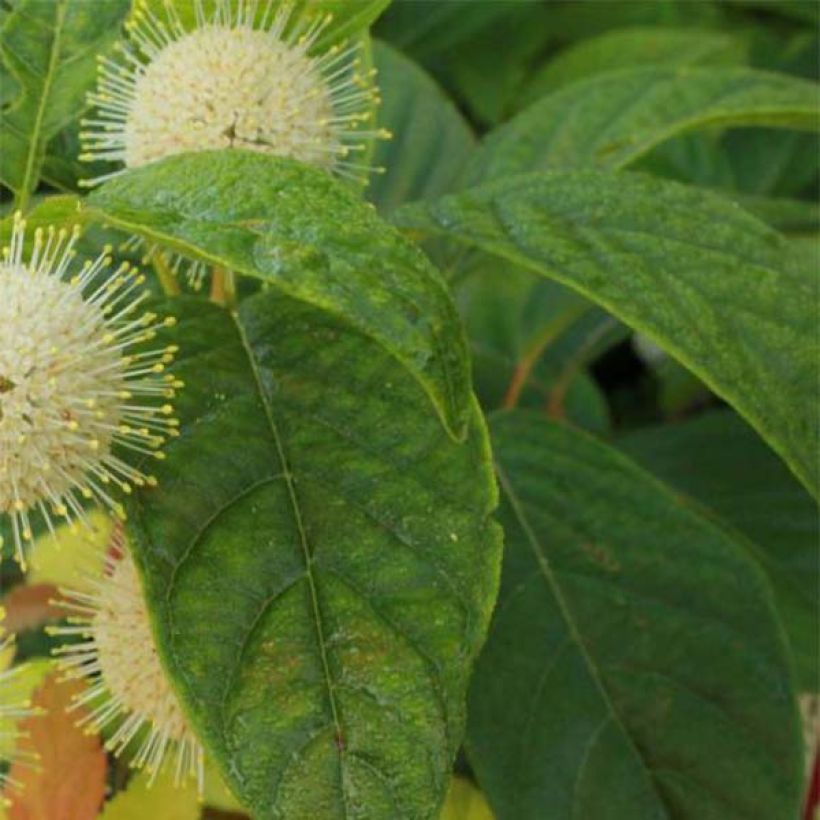



Plant habit
Flowering
Foliage
Botanical data
Cephalanthus
occidentalis
Sugar Shack
Rubiaceae
Button Bush, Button Willow, Globe-flowered bush, Honeybells, Little Snowballs, Swamp Globeflower, White Pond - Dogwood
Cultivar or hybrid
Other Cephalanthus - Button Bush
Planting and care
Cephalanthus occidentalis Sugar Shack should be planted in autumn or early spring in a moist to wet soil throughout the year. It can adapt to a wide range of soils, but is sensitive to excessive limestone presence. If needed, lighten the soil in your garden by mixing it with leaf compost, coarse sand, and mature compost. Mulch the soil to maintain freshness if necessary, and monitor watering. Place it in a sunny but not scorching location or in partial shade.
Planting period
Intended location
Care
- , onOrder confirmed
Reply from on Promesse de fleurs
Hedge shrubs
Haven't found what you were looking for?
Hardiness is the lowest winter temperature a plant can endure without suffering serious damage or even dying. However, hardiness is affected by location (a sheltered area, such as a patio), protection (winter cover) and soil type (hardiness is improved by well-drained soil).

Photo Sharing Terms & Conditions
In order to encourage gardeners to interact and share their experiences, Promesse de fleurs offers various media enabling content to be uploaded onto its Site - in particular via the ‘Photo sharing’ module.
The User agrees to refrain from:
- Posting any content that is illegal, prejudicial, insulting, racist, inciteful to hatred, revisionist, contrary to public decency, that infringes on privacy or on the privacy rights of third parties, in particular the publicity rights of persons and goods, intellectual property rights, or the right to privacy.
- Submitting content on behalf of a third party;
- Impersonate the identity of a third party and/or publish any personal information about a third party;
In general, the User undertakes to refrain from any unethical behaviour.
All Content (in particular text, comments, files, images, photos, videos, creative works, etc.), which may be subject to property or intellectual property rights, image or other private rights, shall remain the property of the User, subject to the limited rights granted by the terms of the licence granted by Promesse de fleurs as stated below. Users are at liberty to publish or not to publish such Content on the Site, notably via the ‘Photo Sharing’ facility, and accept that this Content shall be made public and freely accessible, notably on the Internet.
Users further acknowledge, undertake to have ,and guarantee that they hold all necessary rights and permissions to publish such material on the Site, in particular with regard to the legislation in force pertaining to any privacy, property, intellectual property, image, or contractual rights, or rights of any other nature. By publishing such Content on the Site, Users acknowledge accepting full liability as publishers of the Content within the meaning of the law, and grant Promesse de fleurs, free of charge, an inclusive, worldwide licence for the said Content for the entire duration of its publication, including all reproduction, representation, up/downloading, displaying, performing, transmission, and storage rights.
Users also grant permission for their name to be linked to the Content and accept that this link may not always be made available.
By engaging in posting material, Users consent to their Content becoming automatically accessible on the Internet, in particular on other sites and/or blogs and/or web pages of the Promesse de fleurs site, including in particular social pages and the Promesse de fleurs catalogue.
Users may secure the removal of entrusted content free of charge by issuing a simple request via our contact form.
The flowering period indicated on our website applies to countries and regions located in USDA zone 8 (France, the United Kingdom, Ireland, the Netherlands, etc.)
It will vary according to where you live:
- In zones 9 to 10 (Italy, Spain, Greece, etc.), flowering will occur about 2 to 4 weeks earlier.
- In zones 6 to 7 (Germany, Poland, Slovenia, and lower mountainous regions), flowering will be delayed by 2 to 3 weeks.
- In zone 5 (Central Europe, Scandinavia), blooming will be delayed by 3 to 5 weeks.
In temperate climates, pruning of spring-flowering shrubs (forsythia, spireas, etc.) should be done just after flowering.
Pruning of summer-flowering shrubs (Indian Lilac, Perovskia, etc.) can be done in winter or spring.
In cold regions as well as with frost-sensitive plants, avoid pruning too early when severe frosts may still occur.
The planting period indicated on our website applies to countries and regions located in USDA zone 8 (France, United Kingdom, Ireland, Netherlands).
It will vary according to where you live:
- In Mediterranean zones (Marseille, Madrid, Milan, etc.), autumn and winter are the best planting periods.
- In continental zones (Strasbourg, Munich, Vienna, etc.), delay planting by 2 to 3 weeks in spring and bring it forward by 2 to 4 weeks in autumn.
- In mountainous regions (the Alps, Pyrenees, Carpathians, etc.), it is best to plant in late spring (May-June) or late summer (August-September).
The harvesting period indicated on our website applies to countries and regions in USDA zone 8 (France, England, Ireland, the Netherlands).
In colder areas (Scandinavia, Poland, Austria...) fruit and vegetable harvests are likely to be delayed by 3-4 weeks.
In warmer areas (Italy, Spain, Greece, etc.), harvesting will probably take place earlier, depending on weather conditions.
The sowing periods indicated on our website apply to countries and regions within USDA Zone 8 (France, UK, Ireland, Netherlands).
In colder areas (Scandinavia, Poland, Austria...), delay any outdoor sowing by 3-4 weeks, or sow under glass.
In warmer climes (Italy, Spain, Greece, etc.), bring outdoor sowing forward by a few weeks.

